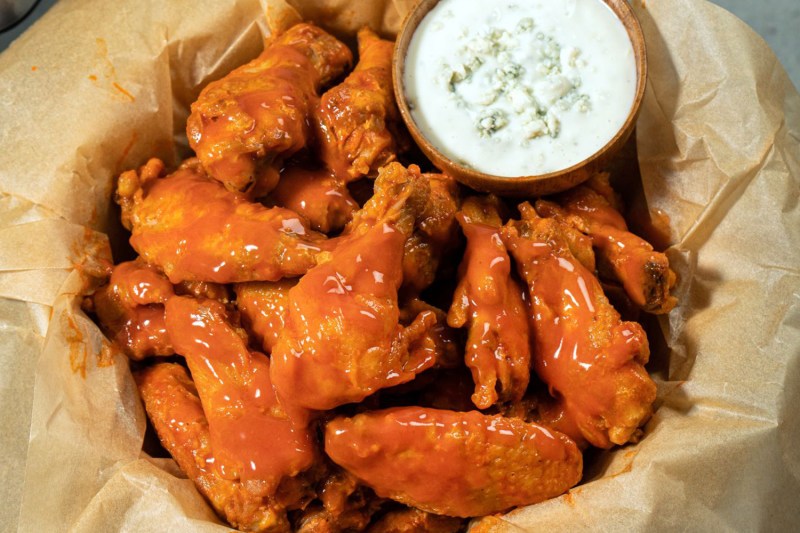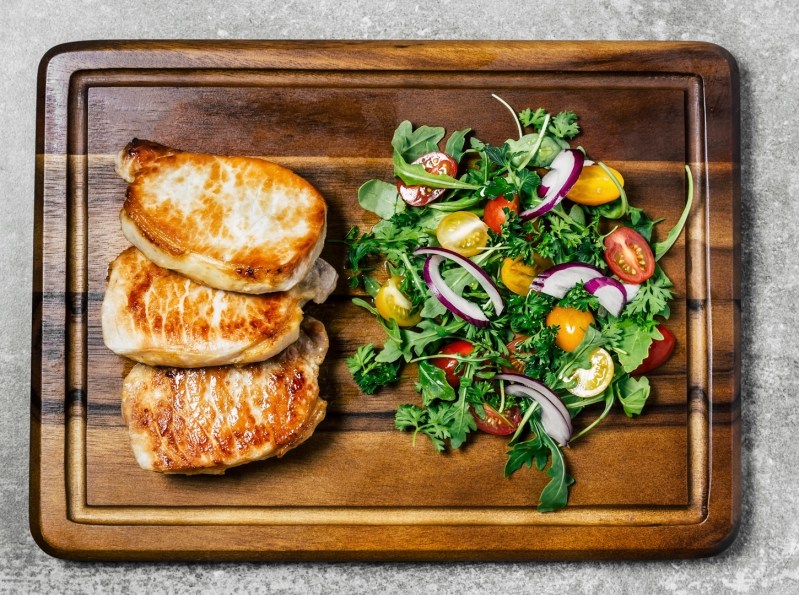If you’ve grown up in the States, chances are, the idea of an “eat what you want” diet sounds too good to be true. That’s likely because of the toxic, all-consuming diet culture we’ve been submerged in for the last several decades. Between fad diets, ridiculous “miracle” workout equipment, supplements that don’t do a damned thing, and social media influencers making everything even more confusing, being told to “eat what you want” is, frankly, a little rattling.
The idea is a good one, albeit hardly a new revelation. Instead of restricting certain foods — which, most certainly, causes you to crave those particular foods more than you ever would have in the first place — indulge in them. Go ahead and enjoy that pepperoni pizza, those greasy french fries, or that bacon cheeseburger. Just eat less of it, then add in the healthy stuff that your body actually needs to thrive.
TikTok is full of videos setting examples of what this “new trend” might look like at mealtime. This example from user lizaslosingweight shows one thoughtful eater indulging in a favorite — instant ramen. Only, instead of making two or three packages and eating them solo, she makes one package and tops it with the good stuff — protein in the form of steak and eggs, and a variety of vegetables.
@lizaslosingweight Eat What You Want, Add What You Need #ewywawyn Instant Noodles! I do this to lose weight and keep it off for good! #weightloss #weightlosstransformation #eatwhatyouwantaddwhatyouneed #healthylunch #healthylunchideas #balancedeating
What’s the TikTok “eat what you want” trend?

The trending catchphrase is, “Eat what you want, add what you need,” meaning, of course, go ahead and have the “bad” food you want, but make it healthier by adding proteins, vitamins, and minerals in the form of healthier ingredients.
The absurdity of it all is that this is how we’re meant to eat — no restrictions, no counting calories, no apps telling us how many steps to take. But, as a culture, we’ve become so focused on the scale and “healthy” fads, that we’ve completely forgotten to live healthfully, naturally. So much so, in fact, that we actually need doctors telling us that eating an entire pizza is probably a bad idea. And watches that remind us to get up and move our asses every few minutes.
Why is this TikTok trend potentially dangerous?

The laughable reason doctors are concerned about this trend is that they fear many Americans may hear “eat what you want and add what you need” and translate that to “eat a dozen donuts every day, but don’t forget to add in an apple slice.”
Dr. Amy Lee, Head of Nutrition for Nucific, says, “I think overall, this method of ‘eat what you want, add what you need’ could work only if you accept the idea that the food that you want (assuming it is usually junk food) should be a much smaller amount than the food that you need (high lean protein and fiber). Dangers would be dealing with a person who just doesn’t have a concept of portion control and literally ends up eating thousands of calories and then complementing it with a few pieces of lettuce.”
Of course, portion control is also an enormous concern in our culture, and in this new way of thinking. We’re a country of Big Gulps and King Sized candy bars and single restaurant entrees that could feed a family of four.
Dr. Lee goes on to say, “Human behavior is notorious for underestimating calories. People could find themselves not improving their health if these concepts are not understood. My fear is that someone who is using this method eats 5-6 meals daily and think it is ok to eat 5-6 portions of junk food to follow the program. What amount is too much is my main concern.”
How you can eat a more balanced diet

It’s much easier said than done, but truly, moderation is the key to healthy living. At its heart, that’s what this trend is about. Thankfully, we’re starting to veer away from the restrictive diet culture that has absolutely poisoned generations of people, and this is a step in the right direction.
“Overall, what people should know is that sometimes, it is the fear of missing out and/or feelings of deprivation that cause them to not follow a plan. Truly, no one gains 3 lbs overnight by eating a small bowl of chips,” says Dr. Lee. She then poses the question, “But can a typical person eat just a small bowl of chips and be able to walk away?”
Dr. Lee’s skepticism made us wonder — is our culture so obsessed with jumbo-sized everything and binge eating that we simply cannot control ourselves with food? Or is this new “fad diet” the start of something wonderful? A reminder of sorts that eating is meant to be an enjoyable, even romantic experience, nourishing our bodies with both pleasure and the essential nutrients it needs to properly function? Or are we just a lost cause?



